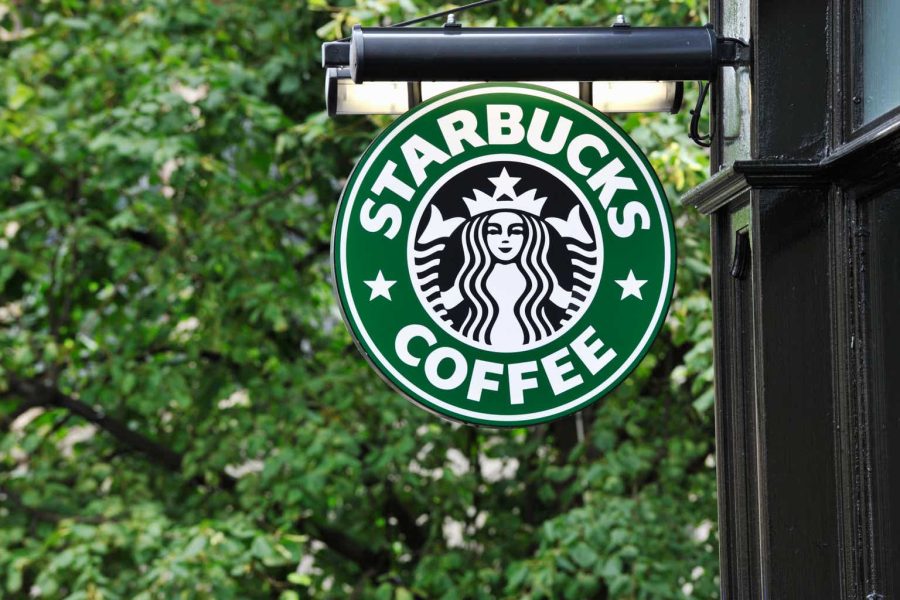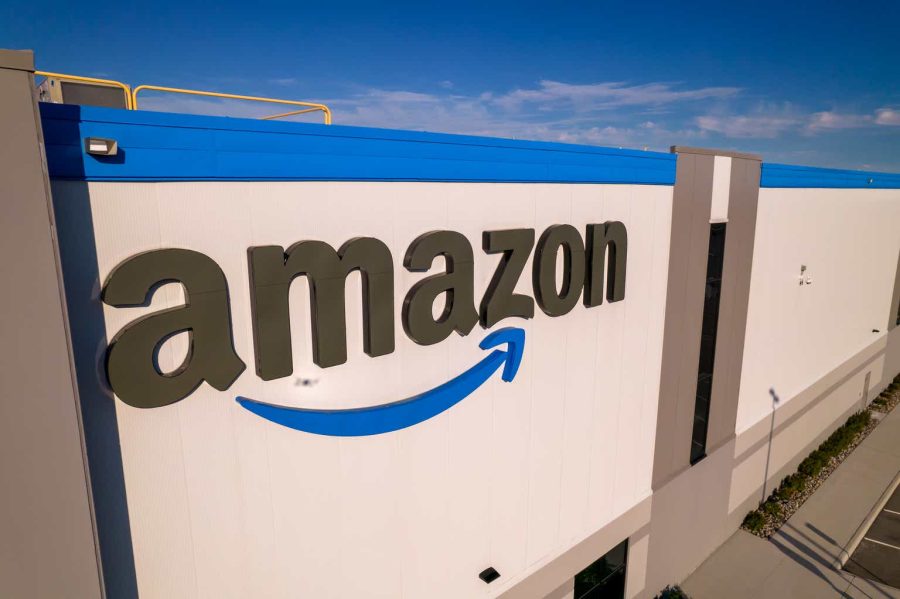July 14, 2024 This Week Top S&P 500 Gainers & Losers
Tesla Q2: The Bottom Is Likely In
Tesla: Time To Take Profits
Microsoft: The Q4 Results Should Surprise You
Tesla: Optimus And FSD Probably Won’t Save The Day
April 23, 2024 Maximizing Profits: When is the Right Time to Sell Your Business?
April 12, 2024 Improve Your Financial Status: A How-To Guide
April 12, 2024 How ZIM Integrated Container Tracking is Revolutionizing Global Trade
March 15, 2024 6 Best Growth Stocks To Buy Now According to Metatrader 5

Starbucks (SBUX) Stock Forecast for 2024–2028. Sell or Buy?
Updated: July 27, 2024 (04:02)
Sector: Counsumer cyclicalThe share price of Starbucks Corp. (SBUX) now
50/200 Day Moving Average: $77.84 / $89.26
This figure corresponds to the Average Price over the previous 50/200 days. For Starbucks stocks, the 50-day moving average is the resistance level today.
For Starbucks stocks, the 200-day moving average is the resistance level today.
Are you interested in Starbucks Corp. stocks and want to buy them, or are they already in your portfolio? If yes, then on this page you will find useful information about the dynamics of the Starbucks stock price in 2024, 2025, 2026, 2027, 2028. How much will one Starbucks share be worth in 2024 - 2028?
When should I take profit in Starbucks stock? When should I record a loss on Starbucks stock? What are analysts' forecasts for Starbucks stock? What is the future of Starbucks stock? We forecast Starbucks stock performance using neural networks based on historical data on Starbucks stocks. Also, when forecasting, technical analysis tools are used, world geopolitical and news factors are taken into account.
Starbucks stock prediction results are shown below and presented in the form of graphs, tables and text information, divided into time intervals. (Next month, 2024, 2025, 2026, 2027 and 2028) The final quotes of the instrument at the close of the previous trading day are a signal to adjust the forecasts for Starbucks shares. This happens once a day.
Historical and forecast chart of Starbucks stock
The chart below shows the historical price of Starbucks stock and a prediction chart for the next month. For convenience, prices are divided by color. Forecast prices include: Optimistic Forecast, Pessimistic Forecast, and Weighted Average Best Forecast. Detailed values for the Starbucks stock price can be found in the table below.
Long-term forecasts by years.

Starbucks Stock Forecast: Navigating Macroeconomic Challenges and Rising Competition

The forecast for Starbucks (SBUX) stock is currently influenced by several critical factors. Key among these are the macroeconomic environment, internal management issues, and intense market competition. Analysts tracking SBUX stock emphasize these aspects when predicting potential changes in the company's stock price.
Major Influencers on SBUX Stock Rate
First, the macroeconomic environment, characterized by high commodity prices and inflation, significantly impacts Starbucks' operational costs. These pressures force the company to increase prices, challenging its value proposition to increasingly price-sensitive consumers. As a result, revenue growth may stall, compressing profit margins and negatively affecting SBUX stock rates.
Internally, management credibility issues and operational struggles have hindered Starbucks' ability to meet investor expectations. Discrepancies between optimistic guidance and actual performance have eroded trust, creating uncertainty about the company’s strategic direction. Additionally, growing competition from other coffee shops offering similar quality at lower prices is eroding Starbucks' market share and questioning its premium pricing strategy.
For analysts aiming to make precise SBUX stock price predictions, these factors are crucial. Understanding how high input costs and consumer behavior shifts impact profitability can lead to better forecasting. Moreover, keeping an eye on management decisions and competitive dynamics within the market can provide deeper insights into future stock performance.
Other significant elements include:
- Stagnation in Starbucks' membership program, signaling weaker customer loyalty.
- Involvement of activist investors, which can introduce short-term volatility.
- Repeated earnings misses and downward revisions in financial guidance, which affect investor sentiment.
To answer whether SBUX is a good stock to buy, or why SBUX stock might be down, one must weigh these factors comprehensively. As such, the SBUX stock forecast requires analyzing both external economic factors and internal company strategies.
Review the original Analysis

Starbucks Stock Forecast: Navigating Key Factors and Economic Uncertainty

Starbucks' (SBUX) stock price has been on a downward trend, raising concerns among investors. To make accurate forecasts on SBUX stock, it is essential to delve into the key factors impacting its future performance. Analysts should pay close attention to the same-store sales decline, economic uncertainties, and operational cost pressures.
Key Factors Influencing SBUX Stock Rates
A significant factor is the decline in same-store sales, particularly a 4% global drop including an 11% decrease in China and 3% in the U.S. This decline indicates fewer customer visits and decreased average ticket sizes, directly affecting Starbucks' revenue. Economic uncertainty plays a crucial role as well, with potential customers in key markets like China tightening their spending, impacting sales of premium coffee.
Global revenue decline and missed earnings expectations are also major concerns. Starbucks has fallen short of revenue forecasts in recent quarters, which impacts investor confidence and stock prices. Adding to this, operational cost pressures have seen the net income margin shrink, indicating financial strain. Analysts must also factor in Starbucks' high debt levels, moving from a cash to current debt ratio of $2.75B in 2019 to just $820M in 2023.
- Same-Store Sales Decline: Monitor sales data closely.
- Economic Uncertainty: Observe consumer spending trends.
- Revenue and Earnings: Track quarterly earnings reports.
- Operational Cost Pressures: Analyze margin trends and SG&A expenses.
Positively, Starbucks’ strategic initiatives, such as launching new products and enhancing its mobile app, aim to boost sales. These can potentially offset the declining same-store sales. Additionally, supply chain optimization targeting $4B in cost savings over four years could improve operating margins.
By carefully evaluating these factors, analysts can better predict SBUX stock price changes. Keeping a close eye on these indicators will provide insights into whether SBUX stock is a good buy or sell, helping investors make informed decisions about their Starbucks stock forecast and SBUX stock price predictions.
Review the original Analysis

Decoding the Stir in Starbucks Stocks: The Brew for Potential Growth

For those closely watching the stock market, Starbucks Corporation's shares (SBUX) present an enthralling puzzle. Several unique events and factors are looming on the horizon, ready to stir the pot and possibly change SBUX stock rates. Among these, weak consumer sentiment, fierce competition, and promising future growth prospects are key ingredients.
Navigating Through Starbucks' Stock Forecast Maze
Weak consumer sentiment, driven by high inflation and diminished spending power, tops the list. Analysts keen on crafting an accurate SBUX stock forecast must gauge shifts in consumer mood, recognizing that any recovery could send SBUX stock price predictions soaring. Similarly, competition, especially in pivotal markets like China, has brewed a storm for Starbucks. Analysts predict a market "shakeout" might just clear the air, bolstering Starbucks' premium position and reflating sales—a potential indicator to mark SBUX stock as a buy.
But the most alluring aspect is the caffeinated future growth prospects. As consumer sentiment warms up and competition simmers down, analysts anticipate a rebound in comparable store sales and overall robust performance. For those crafting a Starbucks stock forecast, these growth prospects could help in pinpointing when to buy or sell Starbucks stock. Spotting these trends earlyon could lead analysts to brew the most accurate SBUX stock price predictions, marking SBUX as a lucrative sip in the stock market cocktail.
Given these factors, the Starbucks name stock forecast hinges on carefully analyzing these shifts. For investors and analysts alike, understanding how weak consumer sentiment, competition, and future growth prospects intertwinely affect SBUX's stock price target offers a roadmap. It's an opportunity to decipher when Starbucks stock transitions from a hold to a compelling buy, justifying why SBUX stock down phases are merely pauses in a longer journey of growth.
Review the original Analysis
Starbucks Corporation is an American coffee company and coffee chain of the same name, and is the market leader globally. Today it is one of the most famous brands both in the USA and around the world. As of the end of 2014, about 21.3 thousand Starbucks coffee shops were opened.
Starbucks daily forecast for a month
| Date | Target | Pes. | Opt. | Vol., % |
|---|---|---|---|---|
| Jul 29 | 75.56 | 75.10 | 76.52 | 1.89 |
| Jul 30 | 75.43 | 74.37 | 75.75 | 1.85 |
| Jul 31 | 76.11 | 75.00 | 76.73 | 2.31 |
| Aug 01 | 76.84 | 75.96 | 77.22 | 1.66 |
| Aug 02 | 76.21 | 75.51 | 76.57 | 1.41 |
| Aug 03 | 76.44 | 75.31 | 77.34 | 2.70 |
| Aug 04 | 76.36 | 75.99 | 77.49 | 1.97 |
| Aug 05 | 76.45 | 75.82 | 77.28 | 1.92 |
| Aug 06 | 76.59 | 76.16 | 77.05 | 1.17 |
| Aug 07 | 76.33 | 75.25 | 77.43 | 2.90 |
| Aug 08 | 75.64 | 74.64 | 76.10 | 1.95 |
| Aug 09 | 75.46 | 74.25 | 75.88 | 2.20 |
| Aug 10 | 76.12 | 75.65 | 76.67 | 1.35 |
| Aug 11 | 75.39 | 74.94 | 76.58 | 2.19 |
| Aug 12 | 74.73 | 74.07 | 75.55 | 2.00 |
| Aug 13 | 75.61 | 75.11 | 76.55 | 1.91 |
| Aug 14 | 76.13 | 75.06 | 76.96 | 2.54 |
| Aug 15 | 76.58 | 76.23 | 77.75 | 1.99 |
| Aug 16 | 76.15 | 75.74 | 76.85 | 1.47 |
| Aug 17 | 76.78 | 76.30 | 77.78 | 1.93 |
| Aug 18 | 76.99 | 76.16 | 77.92 | 2.30 |
| Aug 19 | 77.10 | 76.61 | 77.95 | 1.75 |
| Aug 20 | 77.58 | 76.59 | 78.36 | 2.31 |
| Aug 21 | 78.11 | 77.03 | 79.28 | 2.92 |
| Aug 22 | 78.83 | 78.16 | 79.20 | 1.33 |
| Aug 23 | 79.80 | 78.57 | 80.90 | 2.97 |
| Aug 24 | 78.24 | 77.27 | 79.33 | 2.67 |
| Aug 25 | 77.58 | 77.18 | 78.25 | 1.39 |
| Aug 26 | 76.93 | 76.35 | 77.33 | 1.29 |
| Aug 27 | 76.55 | 76.13 | 76.99 | 1.13 |
Starbucks Daily Price Targets
Starbucks Stock Forecast 07-29-2024.
Forecast target price for 07-29-2024: $75.56.
Positive dynamics for Starbucks shares will prevail with possible volatility of 1.857%.
Pessimistic target level: 75.10
Optimistic target level: 76.52
Starbucks Stock Forecast 07-30-2024.
Forecast target price for 07-30-2024: $75.43.
Negative dynamics for Starbucks shares will prevail with possible volatility of 1.812%.
Pessimistic target level: 74.37
Optimistic target level: 75.75
Starbucks Stock Forecast 07-31-2024.
Forecast target price for 07-31-2024: $76.11.
Positive dynamics for Starbucks shares will prevail with possible volatility of 2.261%.
Pessimistic target level: 75.00
Optimistic target level: 76.73
Starbucks Stock Forecast 08-01-2024.
Forecast target price for 08-01-2024: $76.84.
Positive dynamics for Starbucks shares will prevail with possible volatility of 1.632%.
Pessimistic target level: 75.96
Optimistic target level: 77.22
Starbucks Stock Forecast 08-02-2024.
Forecast target price for 08-02-2024: $76.21.
Negative dynamics for Starbucks shares will prevail with possible volatility of 1.393%.
Pessimistic target level: 75.51
Optimistic target level: 76.57
Starbucks Stock Forecast 08-03-2024.
Forecast target price for 08-03-2024: $76.44.
Positive dynamics for Starbucks shares will prevail with possible volatility of 2.629%.
Pessimistic target level: 75.31
Optimistic target level: 77.34
SBUX (SBUX) Monthly Stock Prediction for 2024
| Month | Target | Pes. | Opt. | Vol., % |
|---|---|---|---|---|
| Aug. | 74.16 | 71.56 | 78.10 | 8.37 |
| Sep. | 73.95 | 71.10 | 76.18 | 6.66 |
| Oct. | 72.34 | 71.08 | 75.33 | 5.65 |
| Nov. | 73.71 | 72.63 | 76.29 | 4.80 |
| Dec. | 75.31 | 73.04 | 77.21 | 5.39 |
Starbucks forecast for this year
Starbucks Stock Prediction for Aug 2024
An uptrend is forecast for this month with an optimal target price of $74.1572. Pessimistic: $71.56. Optimistic: $78.10
Starbucks Stock Prediction for Sep 2024
An downtrend is forecast for this month with an optimal target price of $73.9496. Pessimistic: $71.10. Optimistic: $76.18
Starbucks Stock Prediction for Oct 2024
An downtrend is forecast for this month with an optimal target price of $72.3449. Pessimistic: $71.08. Optimistic: $75.33
Starbucks Stock Prediction for Nov 2024
An uptrend is forecast for this month with an optimal target price of $73.7122. Pessimistic: $72.63. Optimistic: $76.29
Starbucks Stock Prediction for Dec 2024
An uptrend is forecast for this month with an optimal target price of $75.3118. Pessimistic: $73.04. Optimistic: $77.21
Starbucks (SBUX) Monthly Stock Prediction for 2025
| Month | Target | Pes. | Opt. | Vol., % |
|---|---|---|---|---|
| Jan | 73.20 | 71.41 | 74.33 | 3.93 |
| Feb | 76.69 | 73.74 | 79.69 | 7.48 |
| Mar | 76.15 | 74.44 | 77.54 | 3.99 |
| Apr | 78.02 | 74.08 | 82.33 | 10.02 |
| May | 73.16 | 71.62 | 77.20 | 7.23 |
| Jun | 72.54 | 69.65 | 74.27 | 6.22 |
| Jul | 72.44 | 68.79 | 73.96 | 6.99 |
| Aug | 73.35 | 71.50 | 76.59 | 6.64 |
| Sep | 76.59 | 74.01 | 78.25 | 5.41 |
| Oct | 77.87 | 75.15 | 80.22 | 6.32 |
| Nov | 82.51 | 78.06 | 87.07 | 10.35 |
| Dec | 82.05 | 80.72 | 84.23 | 4.16 |
Starbucks (SBUX) Monthly Stock Prediction for 2026
| Month | Target | Pes. | Opt. | Vol., % |
|---|---|---|---|---|
| Jan | 83.19 | 81.10 | 84.48 | 4.00 |
| Feb | 83.31 | 81.56 | 85.35 | 4.44 |
| Mar | 78.82 | 75.01 | 83.18 | 9.82 |
| Apr | 80.25 | 78.34 | 81.66 | 4.06 |
| May | 82.00 | 80.56 | 85.15 | 5.39 |
| Jun | 80.56 | 78.25 | 85.07 | 8.02 |
| Jul | 78.14 | 76.33 | 82.18 | 7.12 |
| Aug | 75.89 | 73.98 | 77.59 | 4.66 |
| Sep | 76.05 | 74.83 | 78.66 | 4.87 |
| Oct | 80.05 | 76.63 | 83.74 | 8.50 |
| Nov | 82.74 | 81.52 | 87.25 | 6.57 |
| Dec | 84.36 | 82.88 | 86.48 | 4.16 |
Starbucks (SBUX) Monthly Stock Prediction for 2027
| Month | Target | Pes. | Opt. | Vol., % |
|---|---|---|---|---|
| Jan | 81.05 | 78.50 | 83.89 | 6.43 |
| Feb | 79.92 | 76.78 | 82.99 | 7.48 |
| Mar | 79.47 | 77.02 | 83.64 | 7.91 |
| Apr | 83.75 | 79.30 | 87.74 | 9.62 |
| May | 88.27 | 87.03 | 90.06 | 3.36 |
| Jun | 85.98 | 83.63 | 87.67 | 4.60 |
| Jul | 84.84 | 81.99 | 87.57 | 6.37 |
| Aug | 84.48 | 79.93 | 85.72 | 6.76 |
| Sep | 89.03 | 85.36 | 91.28 | 6.49 |
| Oct | 85.92 | 84.71 | 87.66 | 3.36 |
| Nov | 80.68 | 76.73 | 83.34 | 7.93 |
| Dec | 77.86 | 76.12 | 82.06 | 7.24 |
Starbucks (SBUX) Monthly Stock Prediction for 2028
| Month | Target | Pes. | Opt. | Vol., % |
|---|---|---|---|---|
| Jan | 79.77 | 75.30 | 83.73 | 10.07 |
| Feb | 81.50 | 77.73 | 83.27 | 6.65 |
| Mar | 80.13 | 78.39 | 83.61 | 6.24 |
| Apr | 79.12 | 74.75 | 81.39 | 8.17 |
| May | 80.06 | 75.91 | 82.70 | 8.20 |
| Jun | 81.41 | 78.10 | 83.29 | 6.23 |
| Jul | 84.14 | 82.20 | 87.91 | 6.50 |
| Aug | 81.43 | 78.58 | 82.97 | 5.29 |
| Sep | 82.23 | 80.27 | 84.71 | 5.23 |
| Oct | 83.44 | 80.81 | 88.11 | 8.29 |
| Nov | 82.56 | 80.77 | 87.07 | 7.23 |
| Dec | 81.18 | 78.79 | 82.77 | 4.81 |
Starbucks information and performance
P O BOX 34067, SEATTLE, WA, US
Market capitalization of the Starbucks Corp. is the total market value of all issued shares of a company. It is calculated by the formula multiplying the number of SBUX shares in the company outstanding by the market price of one share.
EBITDA of Starbucks is earnings before interest, income tax and depreciation of assets.
P/E ratio (price to earnings) - shows the ratio between the price of a share and the company's profit
Price/earnings to growth
Dividend Per Share is a financial indicator equal to the ratio of the company's net profit available for distribution to the annual average of ordinary shares.
Dividend yield is a ratio that shows how much a company pays in dividends each year at the stock price.
EPS shows how much of the net profit is accounted for by the common share.
Trailing P/E depends on what has already been done. It uses the current share price and divides it by the total earnings per share for the last 12 months.
Forward P/E uses projections of future earnings instead of final numbers.
Enterprise Value (EV) /Revenue
The EV / EBITDA ratio shows the ratio of the cost (EV) to its profit before tax, interest and amortization (EBITDA).
Number of issued ordinary shares
Number of freely tradable shares
Shares Short Prior Month - the number of shares in short positions in the last month.
Starbucks (SBUX) stock dividend
Starbucks last paid dividends on 08/16/2024. The next scheduled payment will be on 08/30/2024. The amount of dividends is $2.24 per share. If the date of the next dividend payment has not been updated, it means that the issuer has not yet announced the exact payment. As soon as information becomes available, we will immediately update the data. Bookmark our portal to stay updated.
Last Split Date: 01/01/1970
Splitting of shares is an increase in the number of securities of the issuing company circulating on the market due to a decrease in their value at constant capitalization.
For example, a 5: 1 ratio means that the value of one share will decrease 5 times, the total amount will increase 5 times. It is important to understand that this procedure does not change the capitalization of the company, as well as the total value of assets held in private hands.





































